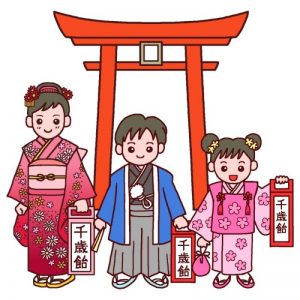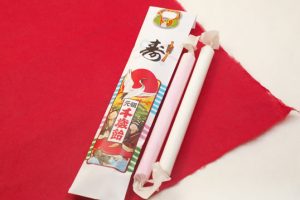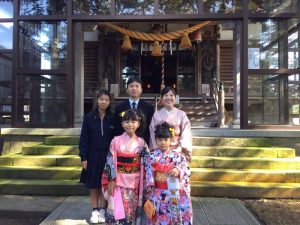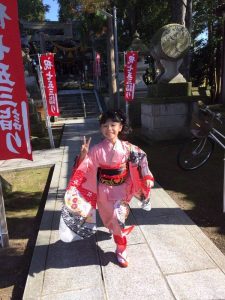Shichigosan is a Japanese word and literally means ‘seven’ – Shichi, ‘five’ – go, ‘three’ – san. Shichigosan is a traditional rite of passage and festival day in Japan for three- and seven-year-old girls and three- and five-year-old boys. It is celebrated on 15th November for the growth and well-being of young children and this custom started in the medieval times.
On the day or a weekend near that day, they visit a Shinto shrine with their parents. Most girls wear Kimonos, while boys wear Haori jackets and Hakama trousers. It is a custom to take photos in a photo studio.
In medieval times, aristocratic and Samurai families started to celebrate the growth of infants into healthy boys and girls since there were more children who lost their lives then.
How they celebrated:
- Boys and girls aged three stopped getting their hair shaven and were allowed to grow their hair.
- Boys aged five put on Hakama trousers for the first time in public.
- Girls aged seven began using Obi sash to tie their Kimono, instead of cords.
By the Edo period (1603-1868), this practice spread to commoners, who began visiting shrines to have prayers offered by priests. The Shichigosan customs followed today evolved in the Meiji era (1868-1912). 15th November was chosen for this celebration because it was considered the most auspicious day of the year, according to the traditional Japanese calendar.
Following the visit, parents generally buy Chitose-ame (longevity candy) for the children. The candy is shaped like a stick and comes in a bag that carries illustrations of cranes and turtles–two animals that are symbols of long life. Chitose literally means a thousand years and is used to denote very long periods of time. The candy and the bag are both expressions of parents’ wish that their children lead long, prosperous lives.
My friend celebrated her 3rd daugther’s Shichigosan (7 year old) and my friend and her another daugther who is 10 also took this opportunity to wear Kimono as per pictures below.



